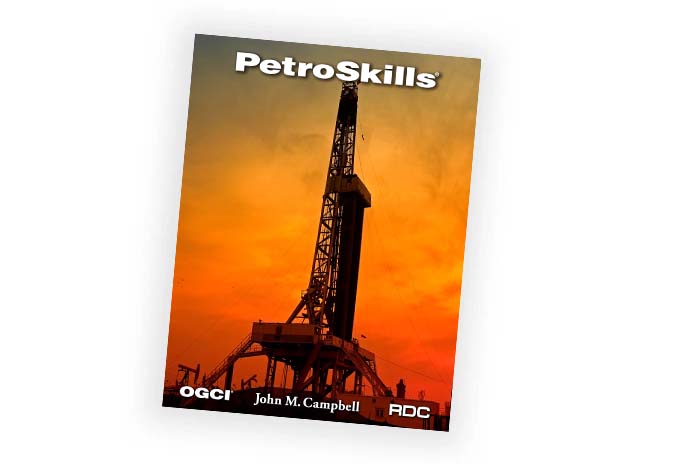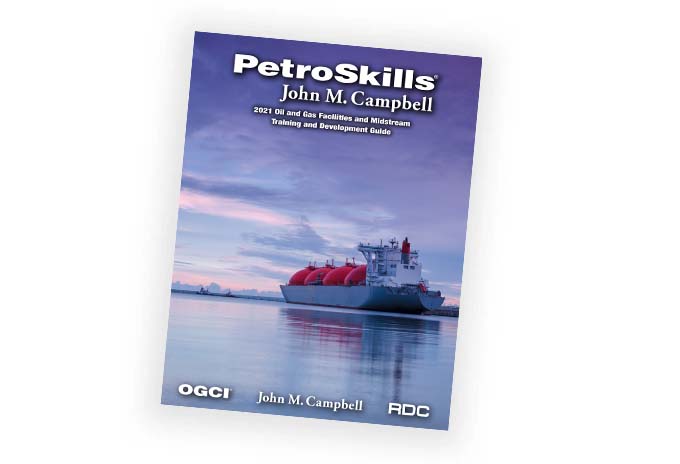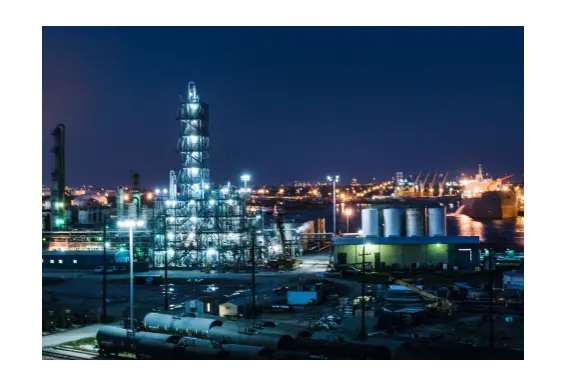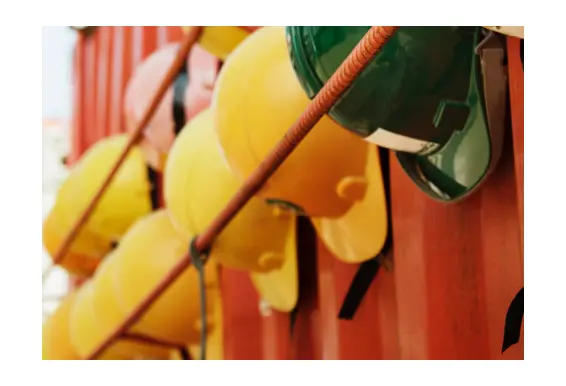Basics of Static Mechanical Equipment - BSM - eLearning series
About the Course
This course provides an overview of mechanical non-rotating, static equipment. The focus is on selection and integrity of pressure vessels, piping and heat exchangers and their integration into the process scheme and control strategy in upstream and midstream oil and gas facilities. The course addresses code requirements focusing on ASME Boiler & Pressure Vessel code as well as B31 Piping code and API tank construction codes. Heat exchanger sizing and TEMA requirements are also discussed. Piping hydraulics and corrosion mechanisms are reviewed to ensure correct equipment sizing and integrity management. The material of the course is applicable to field production facilities, pipelines, gas plants, and offshore systems.
This program is comprised of PetroAcademy Skill Modules, outlined in the "You Will Learn" tab on this page. Each module ranges from 3-5 hours of self-paced activities. Total course duration is approximately 40 hours of self-paced learning.
Target Audience
Facilities engineers, process engineers, senior operations personnel, field supervisors; engineers who select, design, install, evaluate or operate gas processing plants and related facilitiesYou Will Learn
You will learn how to:
-
Define and describe the principles and application of thermodynamic work, energy, efficiency, fluid flow, heat transfer and machines.
-
Describe the structural and foundation concepts and its impact on equipment performance and the typical mounting interface used for supporting rotating equipment and outline mounting interface options.
-
Define the cause and effect of different types of vibrations, how to collect accurate data on them and how to mitigate them in machinery.
-
Define the basic principles of centrifugal action in pumps and compressors and describe how these principles achieve and limit performance, efficiency, vibration and heat.
-
Describe how a pumping / compression system is evaluated and why it is a prerequisite to selecting a pump / compressor.
PROPERTIES OF MATERIALS
-
Compare the different types of steel making processes.
-
Identify the processes and purpose of refining steel.
-
Discuss addition of chemicals in steel.
-
Describe the composition of alloy.
-
Explain the effect of heat/cold on steel and alloy.
-
Describe codes and standards used for testing plastic and composite materials.
-
Describe the classification of plastics.
-
Describe how elastic, plastic and viscoelastic behavior influences the selection and design of plastics.
-
Describe how wear, hardness and impact characteristics influence the selection and design of plastics.
-
Describe how chemical degradation, corrosion resistance, and electrical properties influence the selection process.
-
Describe the thermal characteristics of plastic and composite materials and the effects on their selection.
-
Describe the advantages of plastic and composite materials over other types of materials such as metal, wood, cement, and rubber.
-
List plastic and composite materials commonly used with piping and the factors used in the selection process.
-
List plastic materials commonly used for structural applications, testing methods, and selection practices.
-
Identify codes and standards used for testing plastic and composite materials.
-
Identify quality assurance and reliability principles of plastic materials and list industry codes and standards that influence material quality.
PIPING SYSTEMS & WELDING
-
Describe industry design, material, manufacturing and construction methods and define in-house piping specifications, economic selection criteria and project specific requirements.
-
Identify pressure, temperature and weight factors and describe how they are applied to piping systems and how these factors influence piping projects.
-
Identify organizations that provide codes and standards used in the piping systems, describe major codes affecting basic design, etc., and the key concepts of codes and standards and applications.
-
Define pipe sizing criteria/equations, outlining loads/limits, identify thermal and dynamic effects, and describe key code refs applicable to piping sizing, selection criteria and system stress analysis.
-
Describe and define the issues related to applicable code and standards applying to piping arrangement and integration and identify how piping systems can influence other engineering disciplines.
-
Describe basic types of valves, applicable service conditions, construction materials and limitations. Identify valve material press/temp ratings, basic valve actuator types, and valve isolation characteristics.
-
Describe piping sizes, ratings, materials and design considerations, explain pipe and fitting manufacturing codes, standards and industry specifications. Identify piping materials for oil and gas and other industrial applications.
-
Describe and identify basic industry codes and standards that define piping classes, services and service conditions used in the oil and gas and other industries.
-
Describe and identify practical operation and maintenance factors and factors influencing material, design, and fabrication of piping systems along with codes and standards influencing operations.
-
Describe company, industry and regulatory requirements for permanent and temporary repairs to piping systems and components.
-
Identify and describe industry requirements and principles related to piping system operation, safety, reliability and availability outlining applicable codes/standards, and statutory requirements.
-
Describe the purpose of welding and its limiting factors.
-
Describe codes and standards utilized for welding and welding materials and the organizations that publish them.
-
Describe the basic types of weld processes and the limiting factors.
-
Describe welding metallurgy and its limiting factors.
-
Describe filler materials, their purpose, and their limiting factors.
-
Describe shield materials, their purpose, their properties, and their limiting factors.
-
Describe common material testing and inspection practices.
-
Describe codes and standards utilized for quality control and reliability and the organizations that publish them.
HEAT TRANSFER EQUIPMENT OVERVIEW
-
Identify types of heat exchangers and common applications in oil and gas processing facilities
-
Describe heat transfer mechanisms: conduction, convection and radiation
-
Define heat transfer coefficient and describe the primary parameters that affect its value
-
Describe the rate equation used to calculate heat transfer area
-
Describe the “effective temperature difference” and explain how it affects heat transfer area
-
Estimate heat transfer surface area required for a heat exchanger application
-
Describe shell and tube exchanger types and applications
-
Describe compact heat exchangers and fired heaters
-
List the four primary process cooling (heat rejection) methods
-
Describe why air-cooled heat exchangers are so frequently used, key operating parameters, and the difference between induced draft and forced draft designs
UNFIRED PRESSURE VESSELS
-
Identify organizations that provide codes and standards used for pressure vessels and applicable pressure vessel specifications describing major code requirements affecting basic engineering design and safe practices.
-
Identify how pressure and temperature affect the design and describe each vessel component and its influence on overall vessel weight.
-
Describe basic vessel thickness calculations, loads, stress limits and affects on supports and equipment, select materials, fabrication techniques and inspection requirements.
-
Identify vessel components; their purpose, applied loads, support and structural requirements defining structural loads, recommend material, maintenance and damage mechanism issues on internal components.
-
Describe purpose of pressure vessel coatings and linings, where and when they are used, identify types of in/external coatings used with pressure vessels and outline basic corrosion process.
-
Describe and identify industry pressure vessel design and specifications, material and construction codes and standards and economic selection criteria.
-
Identify vessel components and how they are arranged on vessels, company specifications on vessels and unit arrangement requirements and define purpose of nozzle projections, man ways, walkways, davits and lift-eyes.
-
Identify pressure vessel arrangement and integration with other equipment and piping and define how pressure vessel design can influence other engineering disciplines. Describe rules for vessel spacing and access.
-
Describe operation and maintenance procedures and factors influencing pressure vessels design, and Risk Based Inspection (RBI) as applied to pressure vessels.
-
Describe industry and regulatory requirements for permanent and temporary repairs to pressure vessels and components.
-
Outline the principles of pressure vessel safety, reliability, availability; describe codes, standards, and statutory requirements, and company requirements and common industry practices related to pressure vessel safety.
FIRED HEATERS & BOILERS
-
Describe the types of fired heaters used in oil and gas processing, most common applications and service conditions
-
Describe design and operation of fired heaters, economic selection criteria, typical pressure-temperature ratings, materials of construction and limitations, list applied loads and their effect on design
-
Identify basic types of boilers, applicable service conditions, materials of construction and limitations for boilers and water quality considerations.
-
Identify organizations that provide codes and standards for fired heaters and boilers. Describe major code requirements that affect design, material selection, inspection and safe practices.
-
Describe process conditions and how they affect fired vessels, discuss material properties at elevated temperatures and pressures, and describe the effect of creep on stressed components.
-
Describe types of burners, applicable service conditions, construction materials and limitations, describe how NOx emissions are monitored and controlled.
-
Describe the purpose of coatings, linings, and heat insulation. Describe corrosion processes and protection requirements
-
Identify issues related the layout of fired heaters and boilers and integration with other equipment and piping
-
Describe testing and inspection procedures, Integrity Operating Windows, (IOW), Corrosion Control Documents (CCD) and Risk Based Inspection (RBI) as applied to fired vessels.
STORAGE TANKS
- Describe tank types, the proper application of each type and identify in-house storage tank (ST) specifications, economic selection criteria, and project specific requirements.
-
Describe storage tank classification and the factors that distinguish them, the selection process and proper use, types of floating - roof tanks, and identify economic factors used to size and select tanks.
-
Describe factors influencing above ground and buried tanks, explain environmental and safety considerations of same.
-
Describe process facilities and how they affect STs, identify pressure limitations, max/min, operating P/T, construction materials and company specifications and policies determining service conditions.
-
Identify organizations that provide codes and standards used with STs governing field or shop welded, bolted atm. and low-pres. STs, and describe code requirements affecting engineering design and safe practices.
-
Identify common types of STs, industry and company specifications, fire protection, and safety recommendations used to store petroleum products and crude oils and outline design requirements and foundation types.
-
Describe common STs used to store NGL and LPG products, design requirements, company specifications and outline industry fire protection, maintenance and safety recommendations.
-
Describe common water STs used to store water types, design requirements, foundation types, company ST specifications, and outline industry maintenance and safety recommendations.
-
Identify codes, standards, containment, environment, equipment, personnel hazards, company specifications and describe risk assessment of dealing with the storage of hazardous or toxic materials and STs.
-
Identify internal components associates with tank types, company specifications for tank internals, and describe roof drains, leg supports, and chilling piping.
-
Identify types of foundations for storage tanks, specifications on tank foundations and exterior components, and describe external tank components.
-
Describe factors influencing ST integration with other equipment, tank farm layout, in/external corrosion protection…dike arrangement, and identify company specifications on tanks and related systems.
-
Describe procedures and factors influencing the design, industry codes and standards dealing with ST testing and inspection requirements and identify company policies dealing with same.
-
Describe industry and regulatory requirements for permanent and temporary repairs to storage tanks.
-
Describe applicable codes, standards, and statutory requirements related to ST operation, basic principles safety and reliability.
CORROSION CONTROL & PROTECTION
-
Describe basic corrosion principles
-
Describe corrosion risk and effects on the environment and on business
-
Describe the basic aspects of electrochemical corrosion
-
Describe the four necessary elements to form an electrochemical corrosion cell
-
Identify the different forms of corrosion encountered in oil and gas facilities
-
Define the basic corrosion principles which apply to cathodic protection
-
Describe the galvanic series of metals and its significance
-
Identify methods of corrosion control
-
Recognize the use of coatings, corrosion inhibitors, biocides and cleaning pigs and scrapers as forms of corrosion protection
FIRE PROTECTION SYSTEMS
-
Describe the main fire protection strategies
-
Discuss the elements of passive and active fire protection
-
Explain the application of commonly used fireproofing materials
-
Identify areas of application for fire and blast walls Discuss the application of drainage, containment, and remote impounding
-
Discuss applications for firewater and foam
-
Explain the reasons for typical firewater loop design requirements
-
Discuss the role of remotely operated isolation and depressuring valves in prevention and mitigation of fire and explosion
-
Discuss the objectives and applications of fire and gas alarm system
-
Outline the common processes of startup and shutdown of non-rotating equipment (N-RE), and list the common problems that occur during startup and shutdown (S&S) that can affect equipment integrity.
-
Describe activities for operating N-RE as units and parts of a station and list the primary operational process and shutdown parameters that control unit and station operations.
-
Describe the basic activities and functions of SCADA systems for N-RE as units and as part of a facility.
-
List the routine maintenance activities for N-RE in oil and gas facilities and define concepts of inspection routine maintenance, preventative maintenance, repairs, and planned major overhauls.
-
List the considerations for sparing of N-RE in oil and gas facilities and describe the concepts of stand-by units, spare units and spare capacity.
-
Describe the process of inspection planning on N-RE, list the inspection techniques used, describe RBI and identify associated codes and standards.
-
List the principal safety issues with N-RE, define concepts of equipment reliability and availability and describe the concept of risk when applied to N-RE.
Course Content
- Mechanical equipment
- Properties of materials
- Piping systems and welding
- Heat transfer equipment overview
- Unfired pressure vessels
- Fired heaters and boilers
- Storage tanks
- Corrosion control and protection
- Fire protection systems
- Mechanical Equipment Inspection, Operation and Maintenance
Product Details
Categories:
Midstream, DownstreamDisciplines:
Mechanical EngineeringLevels:
BasicProduct Type:
CourseInstructors:
Additional
Request a Public Session
If you are interested in a public session of this course, please click the button below to request it.
Request Public SessionIn-House Training
This course is also available upon request as a private, on-site seminar. Contact us for details and pricing.
Request In-House TrainingNeed Help
Contact us if you have additional questions about how to register for or attend this course.
Contact Us



